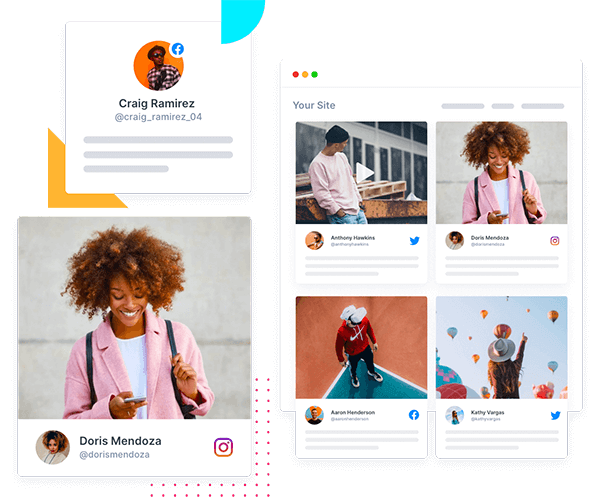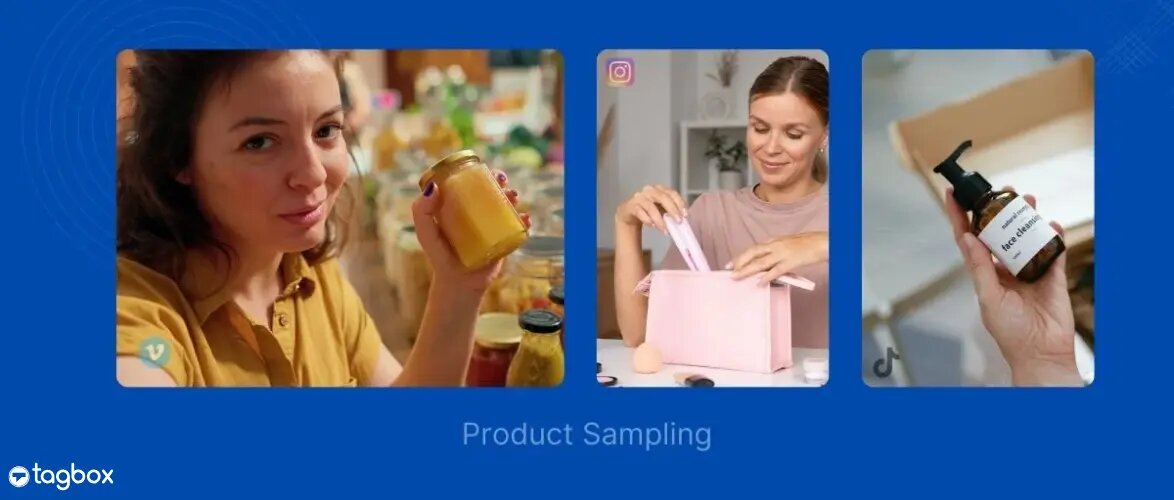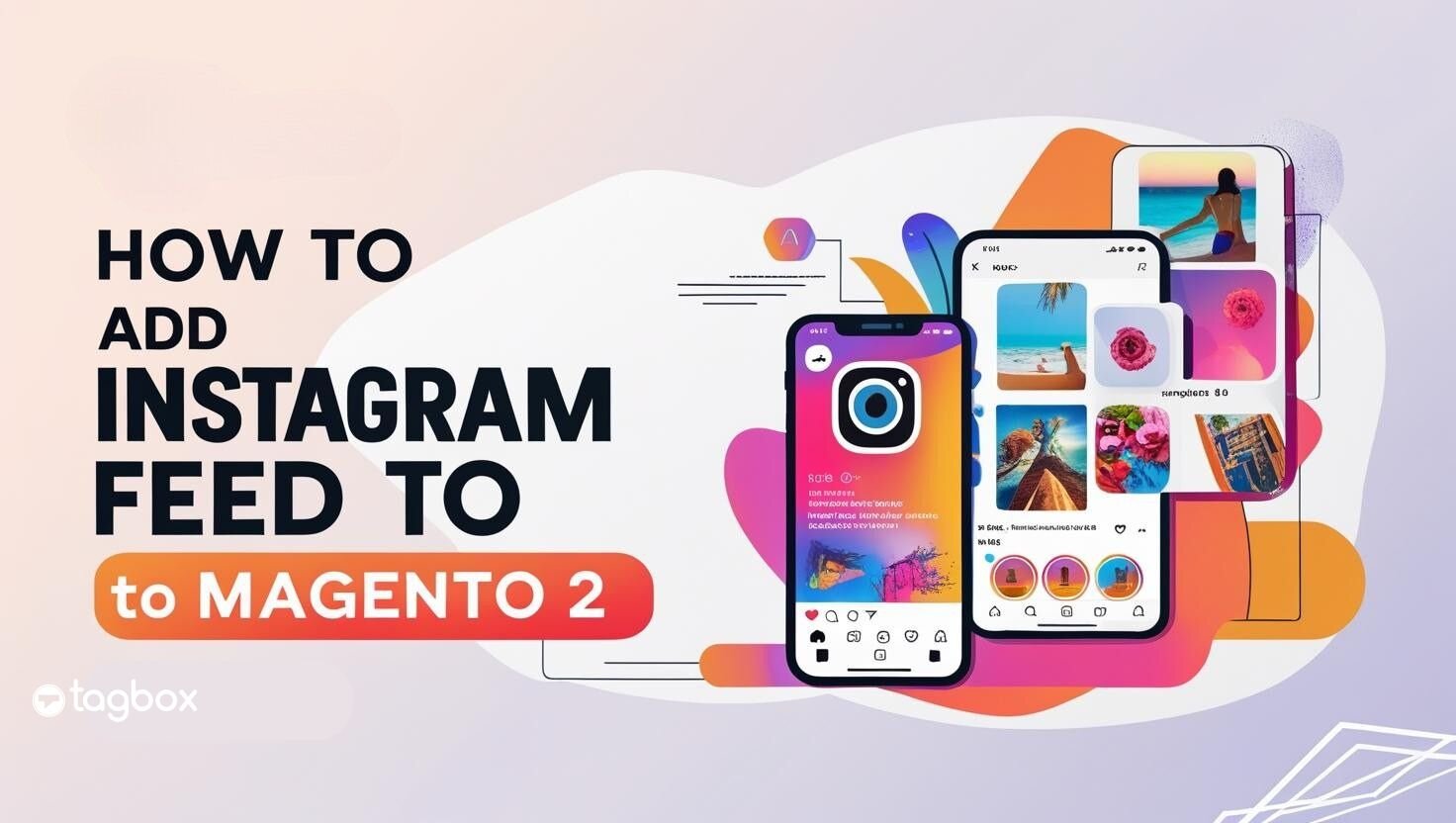Content aggregation is an effective technique for streamlining marketing efforts made by a brand to reach a new audience. Brands can create relevant content on a regular basis by properly using a content aggregator.
From increasing the content strategy of a brand to providing valuable insights, content aggregation has more than one way to help a brand. It provides valuable resources, facilitates content creation, and can also help in better distribution of the content aggregated.
Let’s learn about content aggregation and content aggregator in a bit more detail.
What is a Content Aggregator?
A Content Aggregator is defined as a tool that collects web content in the form of media, applications text, etc. for reuse. Following are the different types of content that are collected by content aggregators.
- Blogs
- Newsletters
- Videos
- Social Media Posts
- Magazine Articles
Content Aggregation vs Syndication vs Curation
Content curation is the process of organizing, and annotating relevant content to provide value.
For Example: A marketing professional curates a weekly newsletter on digital marketing, selecting the top articles, case studies, and industry news from trusted sources to keep subscribers informed and engaged
Content aggregation involves gathering content from multiple sources and presenting it in one location.
For Example: A news aggregator app collects headlines and articles from multiple sources, organizing them into one feed for readers to access a variety of news stories in a single location.
Content syndication refers to content distribution. This is often done through partnerships and is generally done to reach a wider audience.
For Example: A technology blog permits other websites to republish its articles, expanding its reach and audience. The original content remains on the blog while gaining exposure through syndication.
Types of Content Aggregators
There are various types of content aggregators that are available in the market. This categorization has been done on the basis of how the content collected is used.
- News Aggregators: These platforms collect and display news content from different sources over the internet. Examples: Google News, Flipboard, Feedly, etc.
- Social Media Aggregators: These are the types of aggregators that collect content from different social media platforms and help you to collect your user’s content. Examples: Tagbox, Hootsuite, TweetDeck, etc.
- Video Aggregators: Video aggregators are used for collecting videos from video platforms such as Vimeo, YouTube, etc. Brands can easily embed videos on their website. Example: Tagbox, Curator, etc.
- RSS Feed Readers: These are the type of content aggregators that allow the user to subscribe to the feeds of their favorite blogs, publications, websites, etc.
Bonus read: Top review aggregator tools
It is always possible to gather content from the internet manually, but content aggregators have made it convenient and much less time-consuming. Brands use aggregators when they want to enhance their marketing efforts by creating effective content marketing strategies.
Businesses can also be up to date on the industry they are working in and strategize accordingly.
How Content Aggregator Can Help Marketers? (Benefits)
Following are different ways Content Aggregators can help businesses in terms of marketing.
Research and Content Discovery
Brands use content aggregators to research trending topics, articles, and other content from the industry.
This helps a brand stay in the trend and create relevant strategies for more engagement. The content gathered can also help the business understand the current status of the market and make business decisions accordingly.
Customer Insights
Content Aggregators can provide information that can help understand the strategies and content that resonates with the market.
Brands can easily pick out the topics and content receiving the most attention, helping them to create future campaigns accordingly. Insights gathered can also help identify what component is lacking in the market that is also in demand.
Brands can also get benefits from Google reviews by aggregating them as Google reviews are the most authentic social proof according to the research.
Content Curation
Brands can aggregate the content from various sources and share it with their audience.
Content curation and management become very easy with content aggregators, making it easier for brands to identify potential opportunities, track competitors, etc.
Curation also helps in the establishment of the marketer as an authority in the field the brand is working in. This ultimately helps in increasing trust among the customers.
Idea Generation
Content Aggregators inspire brands to create a vast range of content. A brand can get different ideas of what type of content might work best for their business, making them want to try new ways to engage more crowds.
A Brand can identify new forms of content that might be in demand such as new topics for blogs, social media posts, newsletters, etc.
Time-Saving
Collecting content from different sources over the internet can consume a lot of time if done manually. Think of scraping Amazon as an example. Filtering the content selected as per the requirement might need even more time. This is when content aggregators come into play. Content Aggregators allow quick collection of large amounts of content from all over the internet.
Time taken in centralizing and curating the content on a single topic or domain is also significantly reduced with content aggregators.
Customer Engagement
Providing the right type of content can help enhance customer engagement significantly.
One of the best customer engagement examples for this is User-generated Content (UGC). Brands can use Content aggregators to collect UGC such as social media content posted by customers about them.
Showing such content on their website can considerably improve customer engagement and might also increase traffic on a brand’s social media accounts.
SEO
Updating the website regularly based on the insights gathered from the content aggregators can enhance a brand’s ranking online. Content aggregators can be used for collecting relevant topics so that the website content can be updated accordingly.
Content Aggregators can also be used for repurposing the content already published on a brand’s website.
Competitive Analysis
Content aggregators can be used as a valuable tool during competitive analysis. Brands can use aggregators to focus on what their competitors are engaging with.
Understanding a competitor’s move can help a brand in strategizing practices to identify opportunities and get better.
Insights gained about competitors can also help in making future decisions by analyzing where they might be lacking and how to capitalize on them.

Aggregate content from Instagram, Twitter, TikTok, etc.
Signup, its FREENo Credit Card Needed.
Types of Content You Can Aggregate
- Social Media posts
Content Aggregators can collect social media content from platforms like Instagram, Twitter, Facebook, etc.
Brands can use this content to post it on their website, making it an impactful social proof. The content collected can also be used for monitoring the brands mentioned, analyzing trending topics, and different ways for customer engagement.
- UGC
UGC is defined as the content generated by the customers such as reviews, comments, photos, detailed testimonials, etc.
By gathering valuable UGC, brands can showcase the experience they have created for their customers. This can be done by embedding Google reviews, creating client testimonials, embedding social media feeds, etc.
- News
Collecting news articles from various internet sources allows brands to stay up to date with the latest trends and current events. Brands can use this information to create relevant and engaging social media posts.
Posting content relevant to the industry also has SEO benefits which eventually have an impact on overall traffic on the website.
- Blogs
Collecting blogs from different websites can help a brand understand the content that can be engaging and align with the brand’s interests.
The blogs can also be used for sharing niche-focused content with the target audience for better traffic. Getting valuable information about the niche can create a brand’s authority in the industry.
- Video
Brands can collect video content through content aggregators from platforms such as Vimeo, YouTube, TikTok, Instagram, etc.
Brands can also embed TikTok videos, YouTube shorts, and Instagram feed on the website which can work as social proof and also enhance the ranking of the page.
- Research
Research content from online journals or websites provides statistics that can be valuable for analyzing the industry.
Brands can gather research material through content aggregators and use it for brand growth. Brands can analyze market growth in the past, future predictions about the industry, the current condition of the brand itself, etc.
How do content aggregators work?
Content Aggregators collect and manage data from multiple sources on the internet. Following are some of the steps it follows while collecting useful content.
- Selecting a Source:
A good content aggregator lets the user choose the source from where they want to collect the content. The sources can be websites, social feeds, news outlets, blogs, etc.
- Data Collection
The aggregator frequently scans the sources selected to gather new content. Techniques such as RSS feeds, web scraping APIs, etc are used for content data extraction.
- Data Parsing
Once the data is collected, it is parsed by the aggregator so that relevant information can be gathered.
- Content Filtering
After extracting out required information, users can add filters to the content to pick out specific content.
- Content Storage
The processed data is stored in the database so that it can be accessed by the brand when needed.
- Ethical and Legal Consideration
As discussed in the previous sections, content gathered through aggregated cannot be claimed by the brand as its own. Hence, it is very important to ask the actual owner of the content if their content can be presented by the brand.
- Content Presentation
Aggregators also help in presenting the content collected in different ways. The content needs to be displayed in different formats with different mediums such as emails, websites, newsletters, etc.
Top 10 Best Content Aggregator Tools
Tagbox
Tagbox is a content aggregator and management platform designed to help businesses organize and curate their digital content effectively. It offers solutions to streamline content creation, curation, and distribution, ultimately helping companies maintain an organized and engaging online presence.
Type of Aggregator: Social Media Aggregator, Video Aggregator
Pros:
- Content Organization: Tagbox simplifies content management, making it easier to categorize, tag, and retrieve content. Tagbox also understands UGC content rights and keeps that in mind while collecting and using the content aggregated.
- Collaboration: It offers collaboration tools, allowing teams to work together on content projects, which can enhance productivity and creativity.
Cons:
- Cost: Depending on the scale of usage, TagBox may have subscription costs, which could be a downside for small businesses or individuals.
- Learning Curve: Users may need some time to become proficient with the platform’s features.
Google News
Google News is a widely used news aggregation service offered by Google. It compiles news articles, videos, and other content from various online sources and presents them in a personalized, user-friendly format. Users can access Google News through the web platform or mobile apps, allowing them to stay informed about current events and topics of interest.
Type of Aggregator: News Aggregator.
Pros:
- Customization: Users can personalize their news feed to focus on specific topics, sources, or regions, ensuring they receive news that aligns with their interests.
- Comprehensive Coverage: Google News provides a broad spectrum of news articles, offering a diverse range of viewpoints and sources, promoting well-rounded news consumption.
Cons:
- Algorithmic Bias: Google News relies on algorithms to curate content, which can sometimes lead to the display of biased or sensationalized news articles.
- Monopoly Concerns: Some critics argue that Google’s dominance in news aggregation can have negative implications for the media industry.
Curator
Curator is a tool that provides both curation and aggregation so that brands can present the content in the best way possible. It offers categorization for blogs and new articles based on the interest of the reader.
Type of Aggregator: RSS Reader, News Aggregator
Pros:
- Curation and Aggregation: Aggregation and curation combined allow a brand to collect the most relevant content and manage it as per the brand’s needs.
- Easy to Customize: Curator allows users to customize the way in which the content is displayed.
Cons:
- Expensive: The paid features of Curator come at a high price, making it difficult for small businesses to use this tool.
Feedly
Feedly is a popular content aggregator and RSS (Really Simple Syndication) reader that helps users stay up-to-date with their favorite websites, blogs, news sources, and other online content. It offers a user-friendly interface for subscribing to, organizing, and reading web content in one place.
Type of Aggregator: RSS Reader, News Aggregator
Pros:
- Customized News Feed: Feedly enables users to curate their news feed by subscribing to specific sources, making it easy to access content that aligns with their interests.
- Multi-Platform Support: Feedly is available as a web application and mobile app, ensuring users can access their feeds on various devices, making it highly convenient for on-the-go reading.
Cons:
- Limited Free Features: While Feedly offers free access, some advanced features, such as the ability to integrate with third-party apps and services, are only available with a paid subscription.
- Dependency on RSS: Feedly’s reliance on RSS feeds means that it may not be as suitable for discovering content from sources that do not offer RSS feeds, such as social media platforms.
Flipboard is a content aggregation and curation platform that provides users with a visually engaging way to discover and consume news, articles, images, videos, and social media updates. It’s available as a mobile app and web platform, offering a personalized magazine-style experience for users to follow their interests.
Type of Aggregator: News Aggregator
Pros:
- Visual Presentation: Flipboard’s magazine-style layout offers a visually pleasing and immersive way to consume content.
- Personalization: Users can tailor their Flipboard experience by selecting topics of interest, and the platform curates content based on their preferences.
Cons:
- Limited to Mobile Devices: While Flipboard offers a web version, its mobile app is more feature-rich.
- Sponsored Content: Like many free content aggregators, Flipboard includes ads and sponsored content.
Panda
Panda offers both a Chrome extension and a website for its users making it more accessible to others. This platform is specifically created for designers, developers, and entrepreneurs. It brings the latest updates about an industry from sources such as TechCrunch, Github, Hacker News, etc.
Type of Aggregator: Aggregator for Internal Use
Pro:
- Extension and Website: Panda is available as a website and as an extension which makes it usable for any type of business.
- UI: The UI of this aggregator is aesthetically pleasing in terms of presenting the content gathered.
Cons:
- Lacks User Submission: Panda does not allow user submission making it difficult to find the features you want if they are not at the top
Alltop
Alltop is a content aggregation website that compiles and displays headlines and links from various online sources, offering a diverse range of topics and news from around the web. It was founded by Guy Kawasaki and Neenz Faleafine and provides users with a simple and efficient way to discover and explore current news and articles.
Type of Aggregator: News Aggregator
Pros:
- Wide Range of Topics: Alltop covers an extensive array of topics, from technology and business to lifestyle and entertainment.
- User-Friendly Interface: The website’s clean and intuitive design allows users to quickly access relevant content and stay updated on various subjects of interest.
Cons:
- Limited Original Content: Alltop primarily aggregates content from other sources, so users won’t find original content on the platform.
- Potential Outdated Links: Depending on the sources, some links on Alltop may become outdated or lead to content that is no longer relevant.
Pocket is a content curation and bookmarking tool that allows users to save articles, webpages, videos, and other online content for later consumption. It is designed to help users easily organize and access their saved content across multiple devices, such as smartphones, tablets, and computers.
Type of Aggregator: RSS Feed Readers
Pros:
- Save for Offline Reading: Pocket allows users to save content for offline reading, making it convenient for people who want to access articles or videos when they are not connected to the internet.
- Cross-Platform Access: Users can access their saved content on Pocket from various devices.
Cons:
- Lacks Curation Features: While Pocket is excellent for saving content, it lacks advanced content curation features found in some other platforms.
- Dependency on Internet Browser Extension: To save content to Pocket, users need to install a browser extension or use the mobile app.
The Web List
The Weblist is a collection of the latest news articles collected from all over the internet. There are various sources used by The Weblist to gather information. These resources Google News, Buzzfeed, Digg.com, CNN, Flickr, etc.
Type of Aggregator: News Aggregator
Pros:
- Diverse Sources: The sources used by The Weblist are very vast, providing news from different corners of the planet. This lets the user see a complete picture of a particular news.
- Popular Today Filter: Out of all the news collected, The Web List adds the most popular ones so that it can be accessed easily.
Cons
- Long List: You might have to scroll a lot before you find the news you are looking for on a particular platform.
Upstract
Upstract is a content aggregation and curation platform designed to provide a simplified and distraction-free way for users to access news and articles from various online sources. It aims to streamline the news consumption process by eliminating clutter and providing a clean interface.
Type of Aggregator: News Aggregator
Pros:
- Clutter-Free Experience: Upstract’s design emphasizes a clean and distraction-free reading environment.
- Wide Source Coverage: Upstract aggregates content from a variety of sources, allowing users to access news and articles from diverse publishers.
Cons:
- Limited Personalization: Upstract’s focus on simplicity may mean limited customization options for users who prefer highly personalized news feeds.
- Features May Evolve: As with any platform, features and user experiences can change over time, so users should verify the latest offerings and consider their specific needs.
When aggregating content, these are four best practices to follow:
Regularly Review the Content
A content aggregator must be used at regular intervals to ensure that you are getting the most relevant content for use.
Make sure that the content does not accumulate in your database without attention and regular filtration. Content curation based on the latest information gathered from the aggregator also keeps the content fresh and brings regular traffic.
Share Ethically and Attribute
While sharing content collected from the aggregator, one must attribute the original author of the content.
A brand must obtain consent from the owner of the content before sharing it on its marketing front. All copyright laws and fair use laws must be abided by while using content aggregated.
Add Value
A brand must make sure that the content collected from the aggregators adds some value to their interests.
If you are using the content collected to display on your website, there must be a good reason for it.
Diverse Sources
The brand must make sure that the sources selected for collecting the content from content aggregators are gathered from diverse sources. Getting content from similar sources makes the content monotonous and might also have limited perspective.
Elevate Your Content Game: Aggregate content on your website now!
Is Aggregating Someone Else’s Content Rightful?
There are ways to aggregate content owned by someone else, rightfully. A brand must abide by copyright laws to avoid any legal actions against them, before using it. The type of content where this issue might arise in most of the cases is collecting UGC. A brand should understand how important it is to manage UGC content rights before posting on their platform. A brand must give attribution to the owner of the content while using it. Obtaining the consent of the owner is also important when a brand is trying to use the content owned by someone else.
Wrapping up things!
Now that you understand the importance of content aggregation, you can pick out the best aggregator for your brand. While enjoying the benefits of an aggregator, you must also make sure to keep the copyright and fair use laws in mind.
So what are you waiting for, start aggregating content for your brand growth today!
Frequently Asked Questions (FAQs)
There are several steps one must follow while creating a content aggregator website. Following are some of the basic steps.
1. Define your Niche
2. Define Sources
3. Choose Method for Data collection
4. Choose Ways to Display content
Content Aggregation is a process of collecting similar types of content from multiple sources over the internet. The content can be similar in terms of domain, type, data present in it, etc.
The tool used for collecting content from all over the internet is known as the content aggregator.
A website that allows practices related to content aggregation is known as a content aggregation website.
Embed social feed from Facebook, YouTube, Instagram, Twitter on your website, like a PRO









